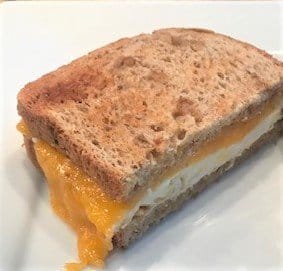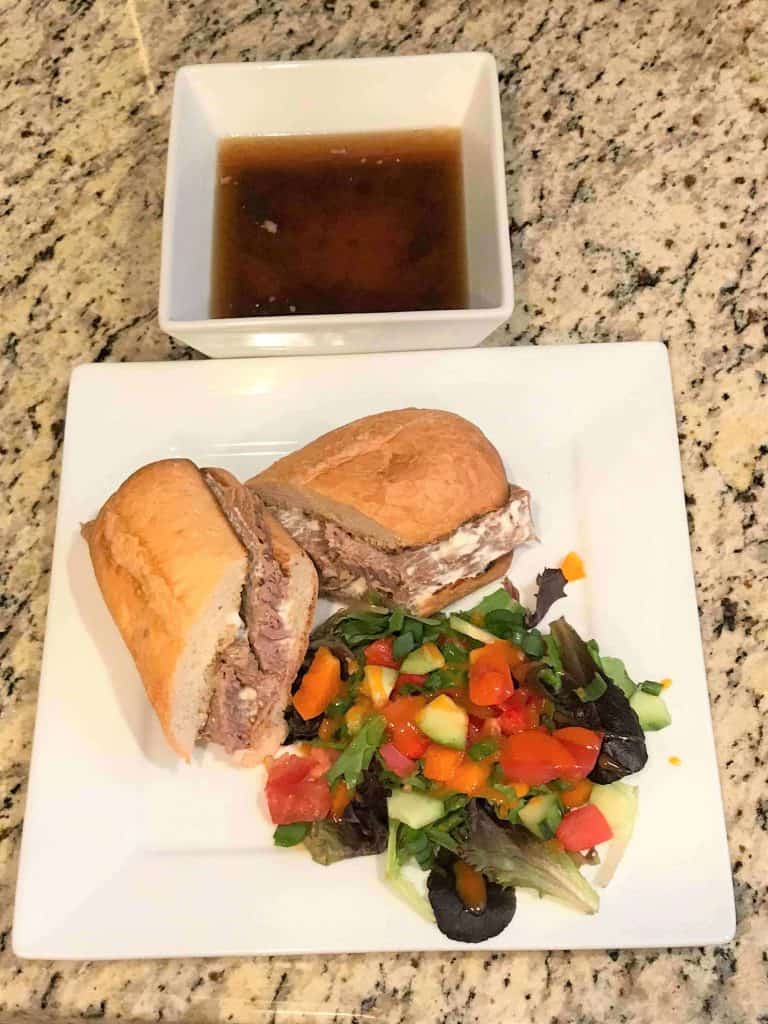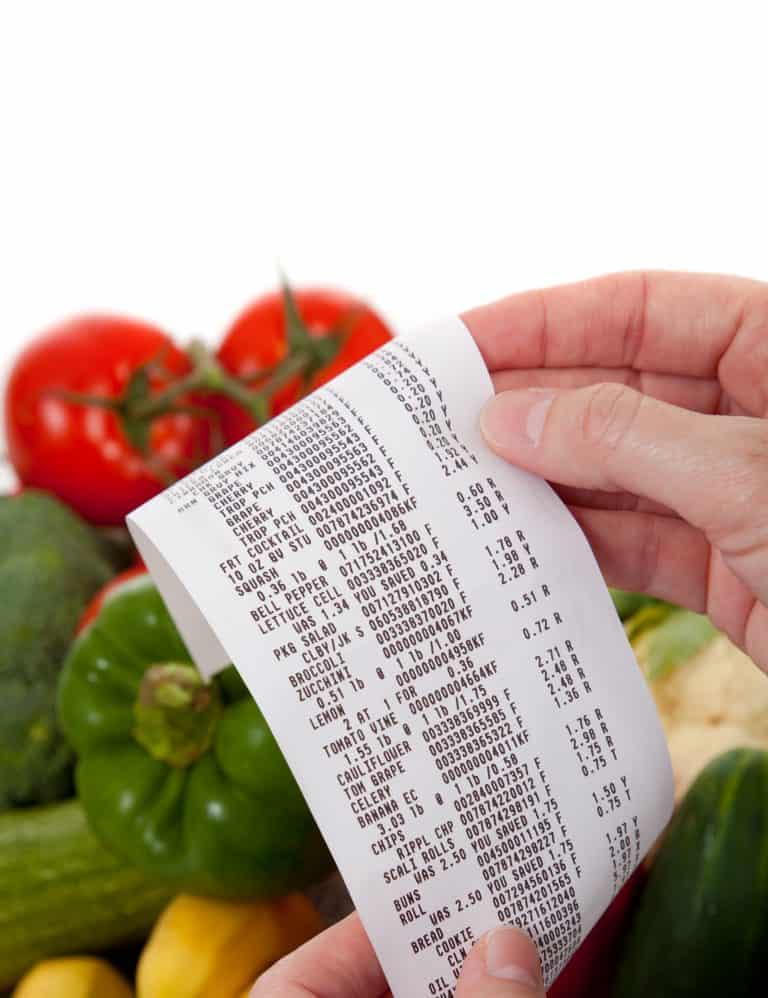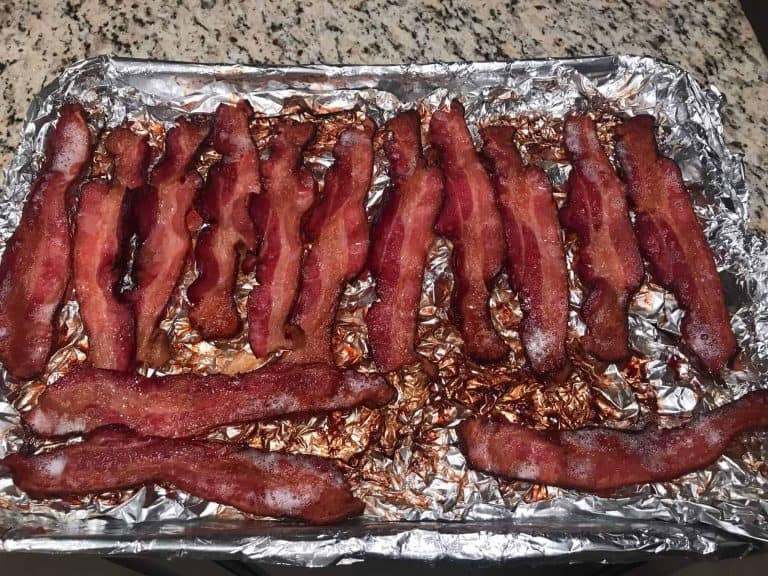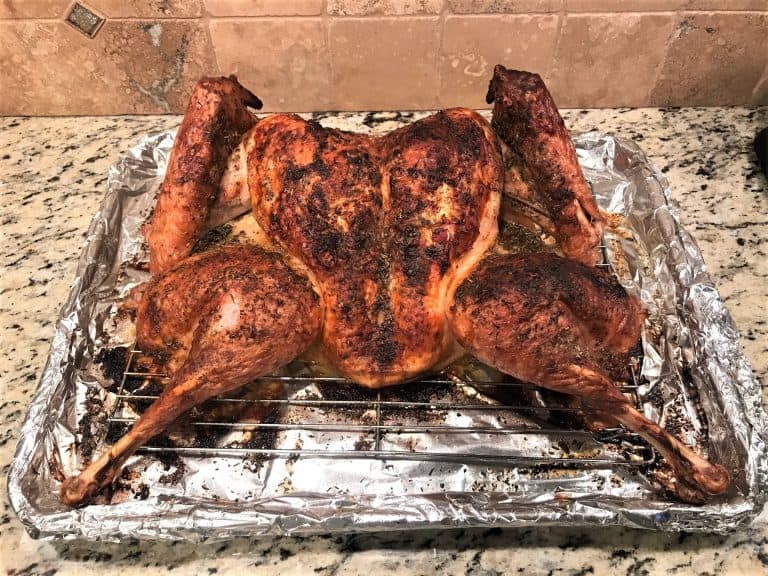Make Your Work Days Easy [How to Start Meal Planning Today]
You’re in the process of getting your life organized and you’re ready to start meal planning. You’ve researched all of the benefits, looked up the different types and methods of meal planning, and even read a couple of tutorials on meal planning for beginners, but you’re still not sure how to actually start. Let me walk you through the exact process I used to start meal planning.
How To Start Meal Planning
Like any other habit or system, getting started is usually the hardest part. You’ve done your research and have a ton of information, but it’s still confusing.
Meal planning is intimidating to a lot of people. There’s a ton of information available, and there are plenty of opinions and varying processes to follow.
Have a Family Meeting
I started by having a family meeting. In my home, it’s just my husband and me, but it’s important that he knows what’s going on and what I’m trying to accomplish.
We sat down, talked about getting on a meal planning schedule and figured out how we would deal with our busy days.
When I include him in the initial planning stages of anything and everything, we both have a better picture of what’s going to happen. We know how it’s going to happen and what the expected outcomes are going to look like. There tends to be less confusion, less disappointment, and a lot less drama.
Get your entire household involved, at least in the planning stages. Having everybody on board and engaged in the process will give you a better chance at success.
Set up your family meeting to discuss the new system and make the associated decisions.
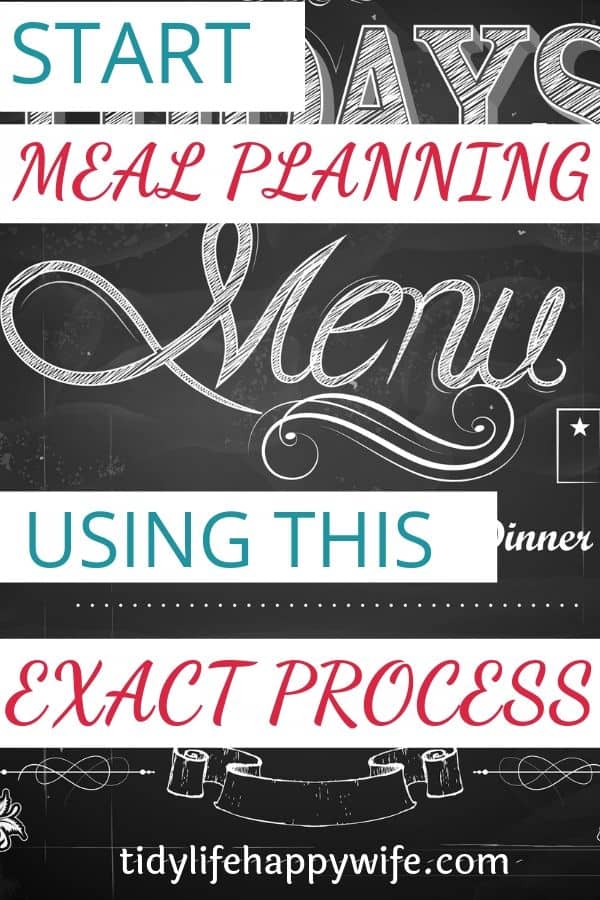
This post may contain affiliate links. Please see my disclosure policy for details.
Create a List of Favorite Meals
Once my husband was on board and had a clear picture of what I was trying to do, we compiled a list of our favorite meals. We started with quick and simple meals so we could settle into a routine before adding meals that are more involved and take longer.
Once your family is all on board, move on to creating a list of your families favorite meals. Have each person list their top ten favorite meals.
Go through the lists and eliminate meals that are extremely time-consuming or complicated to make. Eliminate meals that most family members won’t eat. The purpose of meal planning is to simplify meals, especially in the early stages.
That doesn’t mean you won’t ever make those meals again, they just won’t be part of the weekly meal plans. I love pan-fried oysters, but my husband will not eat them. Consequently, oysters are never part of my weekly meal plan. I make those on the nights he won’t be home.
Combine the remaining meals into a final list that the entire family agrees. Make sure these are fairly quick and easy meals that don’t require a ton of ingredients. As you settle into a routine, you can add more complicated meals.
Organize Your List
Organize your list in a way that makes sense for your family. I organized my list by proteins so I could be sure to include a variety of proteins throughout the week. My meal plan would be an epic failure if I tried to feed my husband chicken five days in a row even if it was prepared differently.
If you have a large family, you might want to organize your list by each person so nobody gets ‘left out’ during a particular week.
This list will help eliminates the frustration of trying to remember what meals everybody likes. It gives each family member a chance to be involved and makes it easier to fill out the meal plan because you aren’t trying to remember different meals, they’re right in front of you.
Start Meal Planning Dinners First
Some people start meal planning with breakfast or lunch initially because these are typically quick easy meals to prepare. I started with dinners because they were the meals causing me the most problems and frustrations.
I knew if I could get a good plan together, planning dinners would make the most impact, and it did.
Since I already knew what I was making for dinner, I didn’t have to think about it all the way home. There was no more frustration from having to come up with something when my mind was on something else.
I didn’t have to stop at the store on the way home and add frustration from the shopping experience.
Meal Plan for One Week at a Time
I started meal planning for one week at a time. I wanted to make sure I didn’t get overwhelmed with the extra planning and shopping associated with additional weeks, and anything actual meal planning was better than the daily process (or lack thereof) that was already driving me crazy.
Even though you’re actually more efficient when you meal plan for longer periods of time because you’re doing the planning, shopping, and prepping less often, you want to give yourself the best possible scenario for success when first starting out, so don’t take on too much.
Start meal planning one meal a day for one week at a time until you get the hang of it and feel like it’s a normal routine. Once you have that down, you can add in additional meals and extend the period of time you meal plan for.
Save your weekly meal plans and you can rotate them every few weeks instead of creating new plans every week.
Grab a Meal Planning Printable
When I started meal planning I wrote everything down on a piece of notebook paper.
I realized I was writing a lot of the same information down every week, so I created a simple template of the redundant information in Excel. Then I just printed the sheet when I was ready to work on my weekly meal plan.
As I settled into a routine and improved my process, I added meals and extended the frequency, I edited the template and created new printables to meet my needs.
The meal planning printables serve as prompts and visual aids for the meal planning process.
Make Scheduling Notes for Busy Days
I wrote a lot of notes on my meal plans (still do), but the most important ones were the notes that showed what other activities I had scheduled on any given day.
On days I’m going to be home a little later, I will plan for quicker, lighter meals. I also plan days that we will need to eat while we’re out.
There’s no point planning to make Instant Pot Clam Chowder when we won’t be home until just before bedtime. We either pack some sandwiches or plan on stopping somewhere to pick up dinner.
Planning to eat out is still meal planning, and planning for all obstacles is essential to your success. Make sure you write down any events or obstacles that will affect your meal planning printable for that day so you can plan accordingly.
Fill Out Your Menu
My first few weeks of meal planning, I planned for leftovers. I purposely selected meals that would make four servings which we would eat on two different days.
I also left one day blank in case something came up during the week and we had to slide a meal a day. If the week went perfectly and we ate our planned meals on the planned days, we had the extra day to go out or order in.
There’s only two of us, so that means I only actually planned 3 meals each week and we at the same meal on two different days.
My first week of meal planning consisted of the following;
- Monday – Cheese Burgers and French Fries
- Tuesday – Roasted Salmon and Asparagus
- Wednesday – Grilled Chicken and Veggies
- Thursday – Cheese Burgers and French Fries
- Friday – Roasted Salmon and Asparagus
- Saturday – Grilled Chicken and Veggies
I cooked once, and we ate twice. Once you settle into your meal planning routine, you can get a little more creative and use the same protein, but make the meal a little different.
Using your list of favorite meals, start filling out your meal plan. Pay particular attention to the days that you noted you’d be home late or would need to eat out.
Do Your Grocery Shopping
When I first started meal planning, I didn’t pay a lot of attention to ingredients that I already had on hand. I just added all the recipe ingredients to my shopping list and picked them all up at the grocery store so there were no extra steps and no chance that I didn’t have something.
I concentrated on making sure the meals were easy to select, easy to prepare and would give me the best chance of settling into a routine. After I settled into a good routine, then I started trying to plan my meals around the ingredients I already had on hand.
My grocery list for my first-week example above consisted of the following;
- Ground Beef (4 portions)
- Salmon Filet (4 portions)
- Chicken Breasts (4 portions)
- 1 bag frozen French Fries
- 2 bundles of Asparagus
- 1 bag Mixed Veggies
- Cheddar Cheese Slices
- 1 head Lettuce
- 2 large Tomatoes
Once you have your meals selected, write out your grocery list, head to the store, and get your shopping done.
RELATED ARTICLE: Reduce Grocery Spending
Meal Prep as Much as Possible
When I returned from the grocery store, I prepped as many of the ingredients as possible in order to save myself sometime later.
My meal prep for my first-week example above consisted of the following;
- Break hamburger into 4 equal patties
- Cut Salmon into 4 equal fillets
- Cut Chicken into 4 equal pieces
- Rinse Asparagus, snap off ends, and separate into 2 bundles
- Rinse and separate lettuce leaves
- Slice Tomatoes
Start Meal Planning Today
Now that I’ve walked you through the process, you have all the necessary information to get your meal planning started. Schedule that family meeting and put together your list of family favorite meals. Print out your meal planning worksheet and get busy.
Let me know how your first shot at meal planning goes or if you have any other questions.
Still having trouble with the meal selection and grocery list part of meal planning? Check out Erin over at $5 Dinners and she’ll do the meal planning for you.


